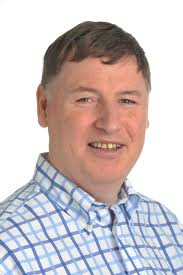CTO, UK Broadband: “We need to become a provider of services, not just technology.”
Philip Marnick is CTO of UK Broadband, which operates the first live LTE network in the UK. Marnick is speaking in the Wireless Broadband Summit on Day Three of the Broadband World Forum 2012, taking place on the 16 - 18 October 2012 at the RAI Exhibition and Convention Centre, Amsterdam, the Netherlands. Ahead of the conference we speak to him on the latest developments at UKB and why he expects its business model to prove successful.
July 30, 2012

 Philip Marnick is CTO of UK Broadband, which operates the first live LTE network in the UK. Marnick is speaking in the Wireless Broadband Summit on Day Three of the Broadband World Forum 2012, taking place on the 16 – 18 October 2012 at the RAI Exhibition and Convention Centre, Amsterdam, the Netherlands. Ahead of the conference we speak to him on the latest developments at UKB and why he expects its business model to prove successful.
Philip Marnick is CTO of UK Broadband, which operates the first live LTE network in the UK. Marnick is speaking in the Wireless Broadband Summit on Day Three of the Broadband World Forum 2012, taking place on the 16 – 18 October 2012 at the RAI Exhibition and Convention Centre, Amsterdam, the Netherlands. Ahead of the conference we speak to him on the latest developments at UKB and why he expects its business model to prove successful.
You’ve become the first to launch LTE in the UK – tell us about this and any other recent milestones that you have achieved?
UK Broadband was the first operator to deploy a 4G LTE for commercial use in the UK. We switched on our first deployment in the London Borough of Southwark in February of this year. This was also the first 3.5GHz (LTE bands 42 and 43) TD-LTE commercial deployment in the world. In April we announced that we are deploying a hybrid microwave/4G LTE network across Swindon and this month we launched LTE Broadband services for customers in Reading.
What speed and throughput is your network delivering?
Customers are experiencing speeds of up to 50Mbps and averaging around 30Mbps. This is consistent with what we are seeing when driving in the area. Users are able to stream high-definition video and operate multiple devices and applications simultaneously. Currently the device is the limiting factor with regards to throughput, not the network.
How is your business model different from other operators? What’s the key to monetisation of data?
Our business model is predominantly a wholesale model. In the early phase of development we are going direct to consumer and business in our coverage areas. We are also working with partners to take the service to consumers, businesses and the public sector. We have designed and deployed our network to be open access so any ISP can offer a service over it to consumers.
You’re service is fixed wireless solution at the moment. Why should business in your coverage area choose your service over fixed line?
Businesses are choosing our services for a number of reasons. The flexibility and value of not requiring a dedicated phone line for broadband is a unique advantage of wireless services. In some areas, we are offering a faster service than many current fixed line options. This is particularly attractive to small businesses in large shared offices where there are high rates of contention. We are also finding that businesses want to use our service in addition to their current fixed service, rather than as a replacement to their fixed line. For example, our service is being used by some businesses to provide guest or customer Wi-Fi without impacting their core corporate network, while others are using it as a back-up to current services as access to cloud based applications is critical.
The UK government has recently been criticised by the CLA as being unlikely to meet its 2015 coverage targets. Could UK Broadband help Broadband Delivery UK meet its targets by using LTE as a fixed line replacement?
Yes, we can help deliver these targets as we are able to provide superfast broadband to homes and businesses in rural areas. LTE can deliver speeds of over 30Mbps at distances of over 7km from the cell depending on the terrain.
You’re using TD-LTE. In the face of predominantly FDD operation by others in the UK for LTE how confident are you about the eco-system around TDD?
TDD is now gaining global traction and the ecosystem is developing quickly around this demand. TDD networks have been deployed in a number of countries, including Japan, China and India. In fact Ovum recently predicted that TDD networks will make up 25 per cent of all LTE connections by 2016.
Unlike FDD, TDD enables the operator to flexibly allocate uplink and downlink capacity within the same channel to match data demand using spectrum resources more efficiently. As mobile data demands continue to soar we expect more operators to consider TDD deployments.
How would you characterise the main challenges facing the broadband industry?
The main challenge facing the broadband industry is delivering superfast broadband to everybody. We shouldn’t use technologies that deliver short-term solutions that will lead to a new broadband divide in rural areas in the future. Also, customers have not yet seen the need for superfast broadband, therefore as an industry we have to drive the applications that will take advantage of the network capacity that is being deployed and show customers the true value in taking-up superfast services.
Does the broadband industry need to become more innovative?
Yes, we need to become a provider of services, not just technology.
The LTE Asia 2012 conference is taking place on the 18-19 September 2012 at the Marina Bay Sands, Singapore. Click here to register your interest.
Read more about:
DiscussionAbout the Author
You May Also Like












_1.jpg?width=300&auto=webp&quality=80&disable=upscale)
